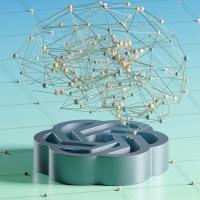Machines and Humans: Finding the Balance in Software Development

How do we maintain a human-centered product experience if we continue to cut humans out of product development?
The introduction of artificial intelligence into software development marks a significant shift. This shift brings efficiency and innovation to the forefront, yet it also prompts a crucial debate: how can we ensure that product experiences remain human-centric amidst the growing influence of machine-driven processes? In this article, we’ll delve into the delicate balance between leveraging technological advancements and preserving the human touch in product development, emphasizing the importance of a synergy between human creativity and machine efficiency.
The Paradigm of Automation Efficiency
AI and automation technologies have revolutionized the software development process. These tools are adept at performing repetitive tasks, analyzing large datasets quickly, and even generating code, which significantly reduces the time and costs associated with development. Such advancements free human developers to dedicate their efforts to more complex and creative tasks, where their unique insights and innovative capabilities are most needed. The impact of AI and automation on the software development lifecycle is profound, promising a future where products can be developed more rapidly and efficiently.
The Imperative for Human-Centric Design
Despite the undeniable benefits of technological efficiency, the ultimate measure of a product's success lies in its ability to connect with users on a human level. Achieving this connection requires a focus on thoughtful design, empathetic user experiences, and a deep understanding of users' needs and emotions—areas where human developers excel. An overreliance on technology in the development process risks producing products that, while technically sound, lack the emotional resonance that truly engages users.
Harmonizing Human and Machine Strengths
The solution to this challenge is to find a harmonious balance between the capabilities of machines and the irreplaceable strengths of human developers. By viewing AI and automation as tools that enhance, rather than replace, human creativity and intuition, developers can leverage the strengths of both. Machines can manage the more laborious tasks of data analysis, testing, and some coding aspects, allowing humans to focus on the creative, strategic, and empathetic elements of product development. This approach ensures that products are not only technologically advanced but also carry a sense of humanity that makes them relatable and engaging.
Examples of Human and Machine Harmonization
AI-Driven User Experience Personalization - AI analyzes user data to tailor app interfaces and content, enhancing personalization. Human designers refine AI recommendations, ensuring they align with user expectations and privacy considerations.
Automated Quality Assurance with Human Oversight - AI automates repetitive testing processes, identifying bugs and performance issues. Human developers review AI-detected anomalies, applying nuanced understanding to fix complex issues and improve the software’s overall quality.
The Future Landscape of Product Development
As we approach a new era in software development, it becomes clear that the path forward is not about choosing between humans and machines but rather finding the most effective way for them to work together. The advancements in AI and automation offer tremendous potential for improving efficiency and fostering innovation. However, their application must be carefully managed to ensure that the human element, which brings life and relatability to technology, is preserved. The future of product development lies in using technology to amplify our human qualities, ensuring that even as we advance, the essence of our creations remains distinctly human.
In essence, the interplay between humans and machines in product development represents a balanced approach that capitalizes on technological progress while maintaining the core human elements of software products. By highlighting the strengths of both humans and machines—such as the efficiency of machines in data analysis and coding, contrasted with the human capacity for creativity, strategic thinking, and empathetic design—this exploration reinforces the need to keep a human-centric perspective amidst technological evolution. The path forward is one where technology enhances human creativity and intuition, safeguarding the fundamental human experience at the heart of successful product development.

